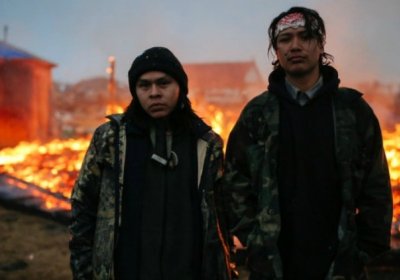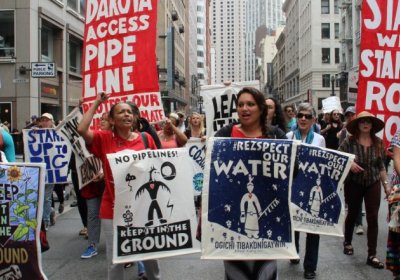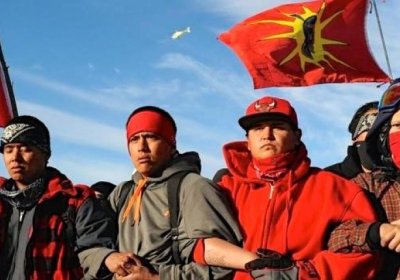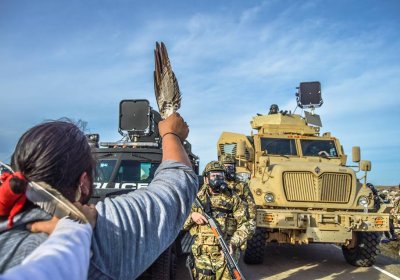Indigenous scholar and activist Nick Estes’ book, Our History is the Future, provides a vivid account of the movement to halt Dakota Access Pipeline, writes Simon Butler.
Dakota Access Pipeline (DAPL)
A US court has delivered a major win to Indigenous organisers and climate activists — and a significant blow to the fossil fuel industry and the Trump administration, writes Jessica Corbett.
The Standing Rock Sioux Tribe recently won a major legal victory in federal court which may have the power to force the shutdown of the $3.8 billion Dakota Access pipeline.
Throughout the battle against the Dakota Access pipeline (DAPL), the US$3.78 billion pipeline that will carry about 500,000 barrels of oil a day, indigenous campaigners and supporters repeatedly warned it was not a question of if, but when a breach would occur.
Now, before the pipeline is even fully operational, those warnings have come to fruition.
After months of fierce opposition from Native Americans and environmentalists, the controversial Dakota Access pipeline (DAPL) is finally carrying oil under Lake Oahe in North and South Dakota, as preparations are made to bring the project into full service.
Owned by Energy Transfer Partners, the 1886 kilometre-long pipeline threatens water supplies and sacred sites on the Standing Rock Indian Reservation, and violates multiple treaties signed with First Nations tribes.
“Water is life!” was the cry heard throughout Washington, DC on March 10 as thousands of people marched for Indigenous rights and the sovereignty of native nations, Common Dreams said that day.
Standing Rock water protectors vow to fight on
A Lakota prophecy tells of a mythic Black Snake that will move underground and bring destruction to the Earth. The “seventh sign” in Hopi prophecy involves the ocean turning black and bringing death to many sea-dwelling creatures.
It does not take an over-active imagination to make a connection between these images and oil pipelines and spills.
First Nations-led water protectors have called for mass protests after the US Army Corps of Engineers granted the final approval on February 7 for Energy Transfer Partners (ETP) to resume building the widely opposed Dakota Access pipeline (DAPL).
The approval came after President Donald Trump overturned an Obama administration order to halt construction under Lake Oahe, a large reservoir connected to the Missouri River that provides water to the Standing Rock Indian Reservation in North Dakota and South Dakota.
Police in North Dakota arrested 76 people at the Standing Rock protest camp on February 1 as the Army Corp of Engineers cleared the way to continue construction of the Dakota Access Pipeline (DAPL) through Native American land.
The US$3.78 billion DAPL project involves building a 1886-kilometre long pipeline to shift almost half-a-million barrels of oil a day. Its route passes through Native American land on the Standing Rock Indian Reservation, threatening water supplies and sacred sites.
Donald Trump’s move to revive the Keystone XL and Dakota Access pipelines sparked a number of emergency protests on January 24 in Washington, New York, Los Angeles, San Francisco, Seattle, Philadelphia and other cities, Democracy Now! reported the next day.
On January 24, Trump issued executive orders that revived the two mega-pipeline projects, which the Obama administration had blocked in the face of huge protests.
The Standing Rock Sioux tribe and supporters have said they will resist US President Donald Trump's executive order to allow construction of the Dakota Access pipeline (DAPL) that threatens to destroy water supply of the Standing Rock reservation in North Dakota, as well as Native American sacred sites.
- Page 1
- Next page










